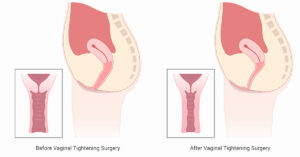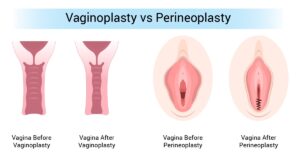Labiaplasty, a surgical procedure designed to improve the appearance and function of the labia, has become increasingly popular. As interest in this procedure rises, many, especially younger women, are curious about the appropriate age to undergo a labiaplasty. Age is indeed a crucial factor in ensuring safety and optimal results.
This article delves into the age requirements for labiaplasty, considering medical guidelines, ethical concerns, and key factors that determine candidacy.
What Is A Labiaplasty?

Labiaplasty is an elective vaginal reconstructive surgery designed to surgically alter the length and/or shape of the labia minora, commonly referred to as the inner lips of the female genitalia. It may be considered a relatively minor plastic surgery; however, it is irreversible, and deciding to undergo the procedure should be approached with careful consideration.
Types Of Labiaplasty
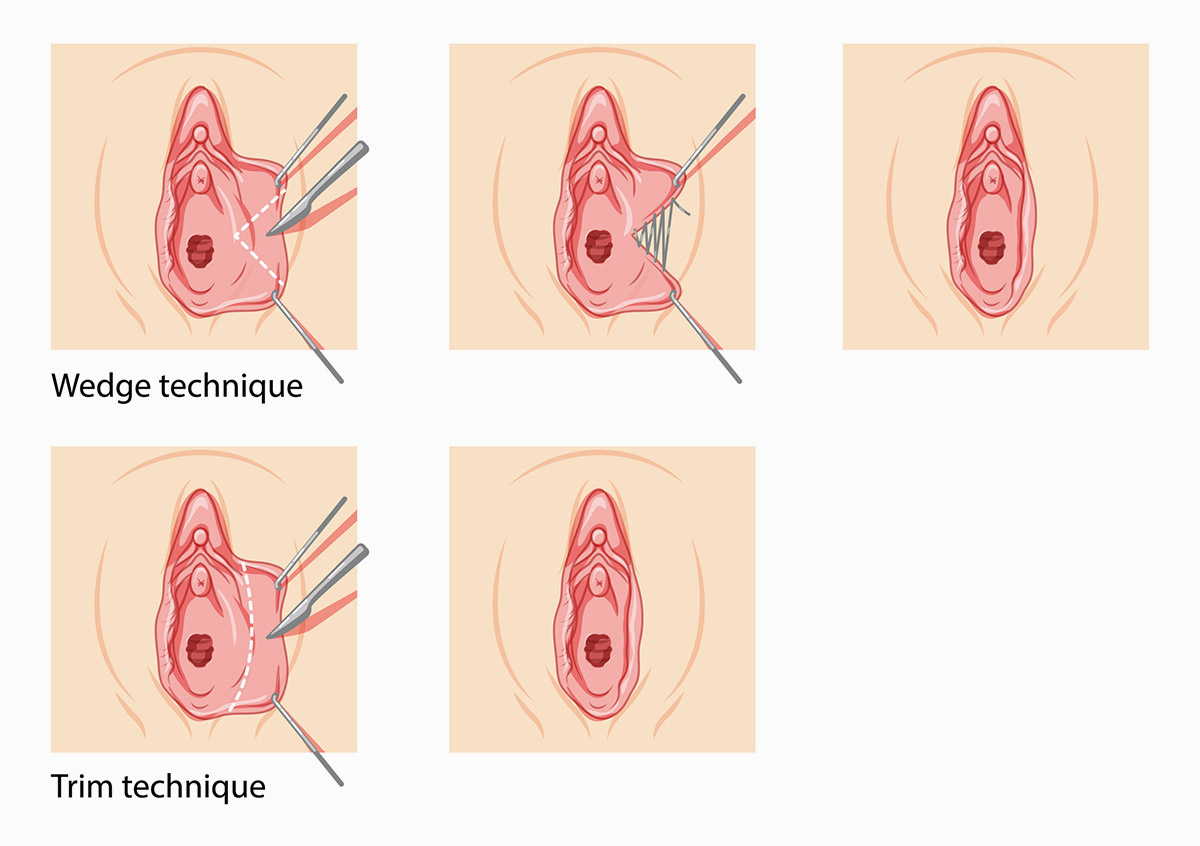
There are various surgical techniques for performing a labiaplasty, with several distinct approaches. These include:
- Composite reduction labiaplasty
- Wedge resection
- Z-plasty (which is a modification of the wedge resection)
- Edge resection (or labial trimming)
- De-epithelialization
- Laser labiaplasty
- Custom flask labiaplasty
- W-shaped resection
- Fenestration labiaplasty with inferior flap transposition.
The choice of surgical technique depends on the size and shape of the labia minora and the desired outcome, specifically how much tissue the patient wishes to have removed.
Understanding The Labial Anatomy
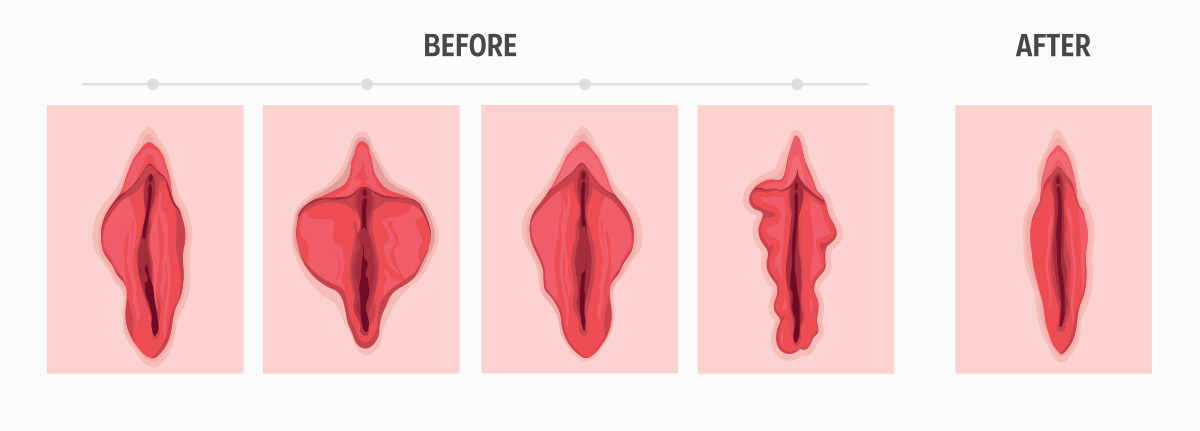
The external female genitalia, known as the vulva, includes:
- Labia Majora: The outer lips, which are typically larger and covered with pubic hair.
- Labia Minora: The inner lips, which can vary widely in size, shape, and colour.
- Mons pubis, clitoris, vaginal opening, Bartholin’s gland, Skene’s gland, vestibular bulbs, vulva vestibule, urethra and vaginal opening are also parts of the vulva.
Like other body parts, the appearance of the labia varies greatly from person to person. Factors such as genetics, hormonal changes, age, and childbirth can all determine the size and shape of the labia.
A study1 tried to objectively measure the dimensions of the labia minora in women, with its width ranging from 1 to 62?mm and its length from 5 to 100?mm. Asymmetry between the left and right labium is also quite frequent.
In some females, the labia minora are tucked neatly within the labia majora, while others have labia minora that protrude beyond the labia majora, creating what some refer to as an “outie”. This variation is entirely normal and does not indicate any health issues.
Understanding that variations in labial appearance are normal can help promote a healthier body image. Each person’s body is unique, and what might seem unusual is often just a natural variation.
If you have concerns about your body, consulting with a healthcare professional can provide reassurance and support.
What Are The Common Indications Women Have For Seeking A Labiaplasty?
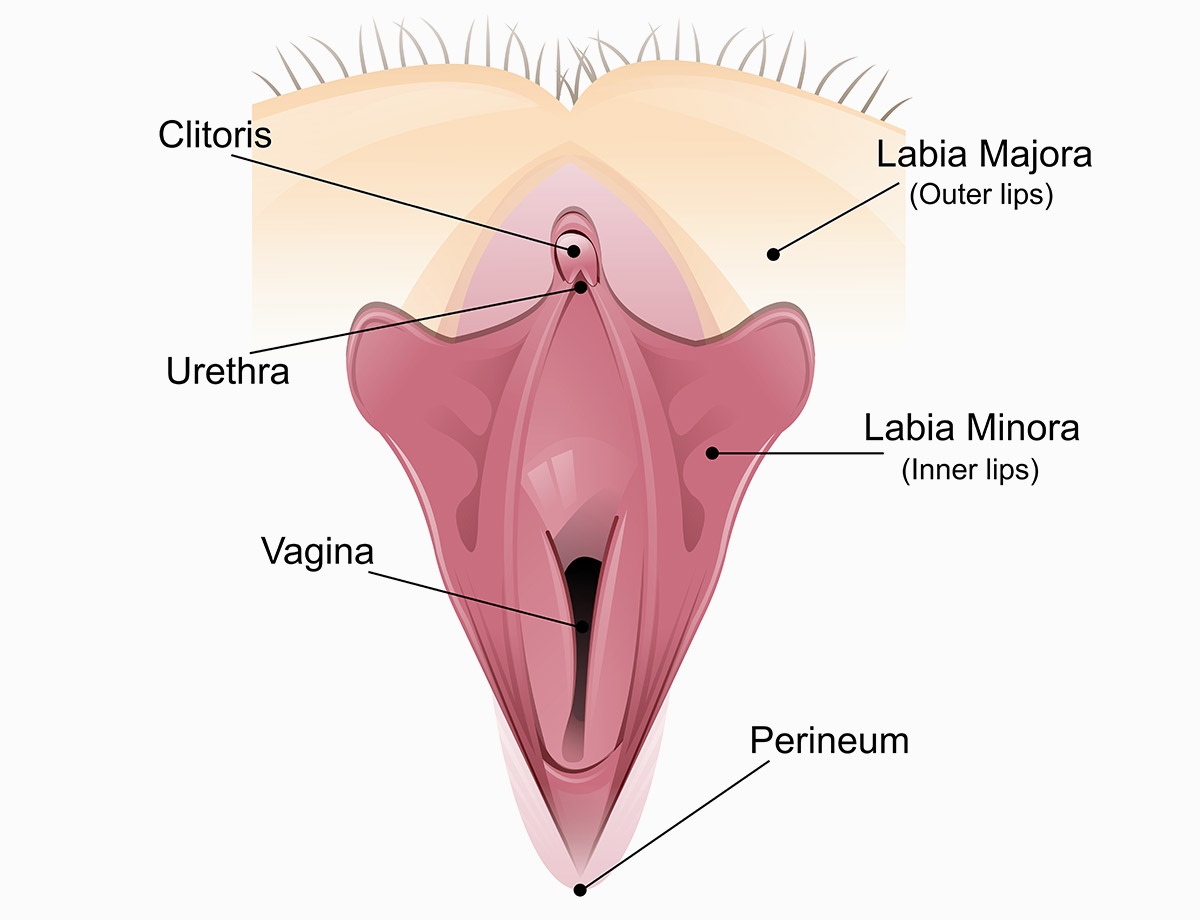
Women consider labiaplasty for different reasons, often making this decision based on personal motivations. Common indications for undergoing this procedure include:
- Discomfort: Enlarged or redundant labia minora can cause physical discomfort or pain, especially when trapped in underwear or rubbing against thighs and clothing during events such as walking or intimate activities. Labiaplasty removes the excess tissue, alleviating these issues.
- Cosmetic Concerns: Many women seek labiaplasty due to dissatisfaction with the appearance of their labia minora. Again, it is important to note that labia come in a wide range of shapes and sizes, and there is no single standard of normalcy.
- Hygiene: Enlarged labia minora can trap moisture, dirt, and bacteria, thereby creating hygiene challenges and increasing the risk of infections. Labiaplasty can improve cleanliness by reducing excess tissue.
Psychological Well-Being: Concerns about the appearance of the external genitalia can significantly impact self-esteem and body image. Labiaplasty can enhance psychological well-being by improving confidence, body image and outlook on life.
How Old Do You Have To Be To Get A Labiaplasty?
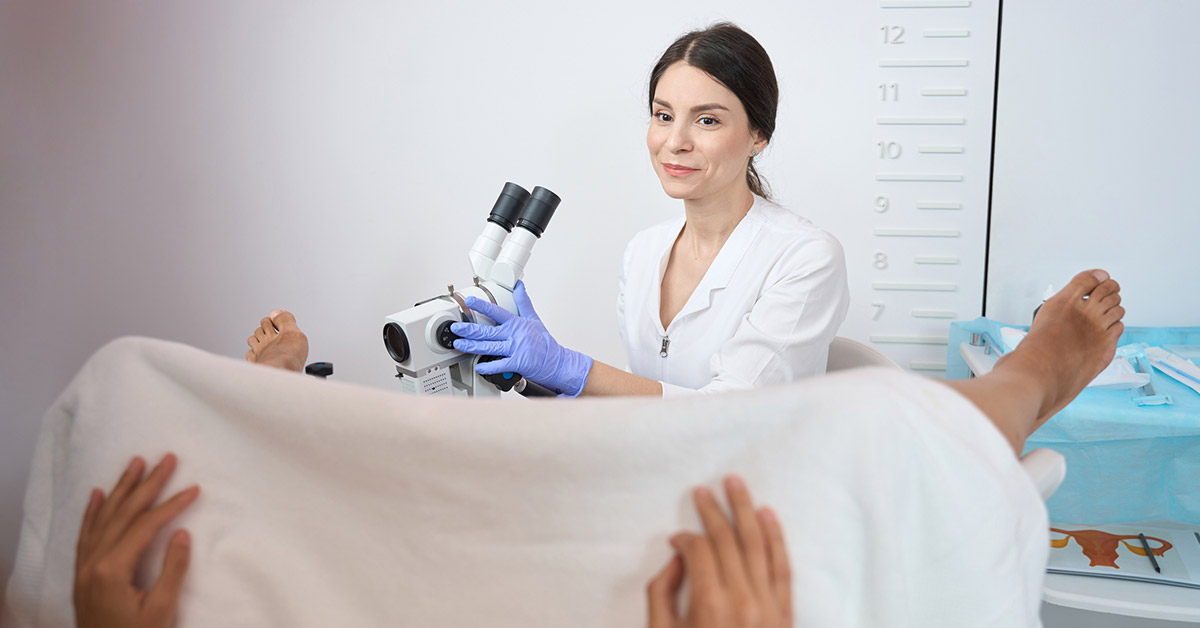
Any woman who is 18 years or older, in good overall health, and experiencing functional or aesthetic concerns related to the size and/or shape of her labia, may be an ideal candidate for labiaplasty. In exceptional cases, a doctor might consider performing the surgery on a young woman under 18, but this is typically reserved for instances where there is pain due to a physical deformity of the labia or complications arising from an injury.
Several medical bodies support this stance. The American College of Obstetricians and Gynecologists (ACOG) states that labiaplasty should only be performed on minors with significant congenital malformations or persistent symptoms directly caused by labial anatomy. The Society of Obstetricians and Gynecologists of Canada (SOGC) suggests that labiaplasty should not be offered until full maturity, proposing 16 as the minimum age threshold.
What Are The Common Reasons For Not Performing Labiaplasty In Minors?
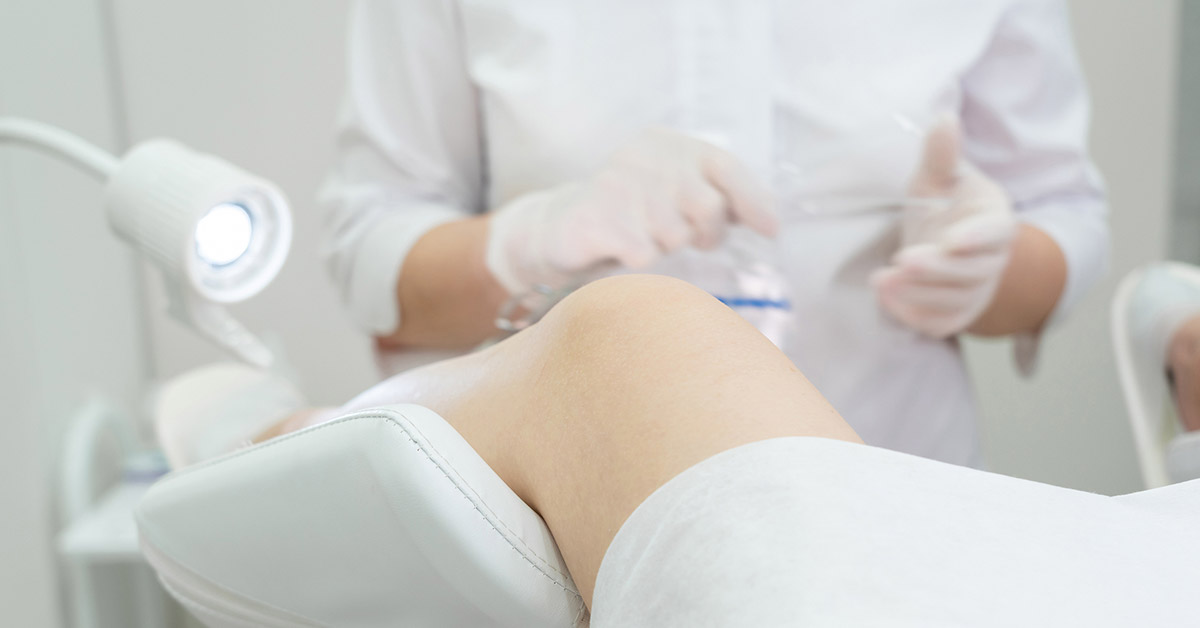
The American Board of Cosmetic Surgery2 advises against labiaplasty for women under 18 years of age for several key reasons:
- Completion of Puberty: Like other body parts, the labia continues to develop and change throughout puberty. Performing labiaplasty before these natural changes are complete increases the risk of unsatisfactory results, including the need for secondary corrective surgery.
- Ongoing Emotional Development: Adolescents are in a crucial stage of emotional growth. Making irreversible decisions during this period may not reflect their long-term desires or needs.
- Potential Risks and Unintended Consequences: Any surgical procedure carries the risk of complications, and in the case of labiaplasty, these may include scarring or loss of sensation; a burden that might be too great for a young woman.
Influence of Idealised Images in Media: Teens are often exposed to and influenced by media portrayals of idealized feminine genitalia. These images create unrealistic standards of beauty that do not account for the natural diversity in size, shape, and symmetry of the labia. Decisions based on these unrealistic expectations can lead to unnecessary procedures and dissatisfaction.
Exceptions That Warrant Performing Labiaplasty On Minors

Regardless of a patient’s age, the decision to undergo cosmetic surgery is deeply personal. Generally, labiaplasty should be deferred until adulthood. However, in rare instances, it may be appropriate for a teenage patient. These might include situations where:
- A physical deformity of the labia causes daily discomfort or prevents the patient from comfortably wearing certain clothing or taking part in certain physical activities.
- Injury or previous surgery in the area results in ongoing pain or complications.
In such cases, it is crucial to ensure that the teenage patient is emotionally prepared for surgery. This means she should have a clear understanding of the realistic outcomes and be committed to a responsible recovery process.
Ethical Considerations Before Performing Labiaplasty On A Minor
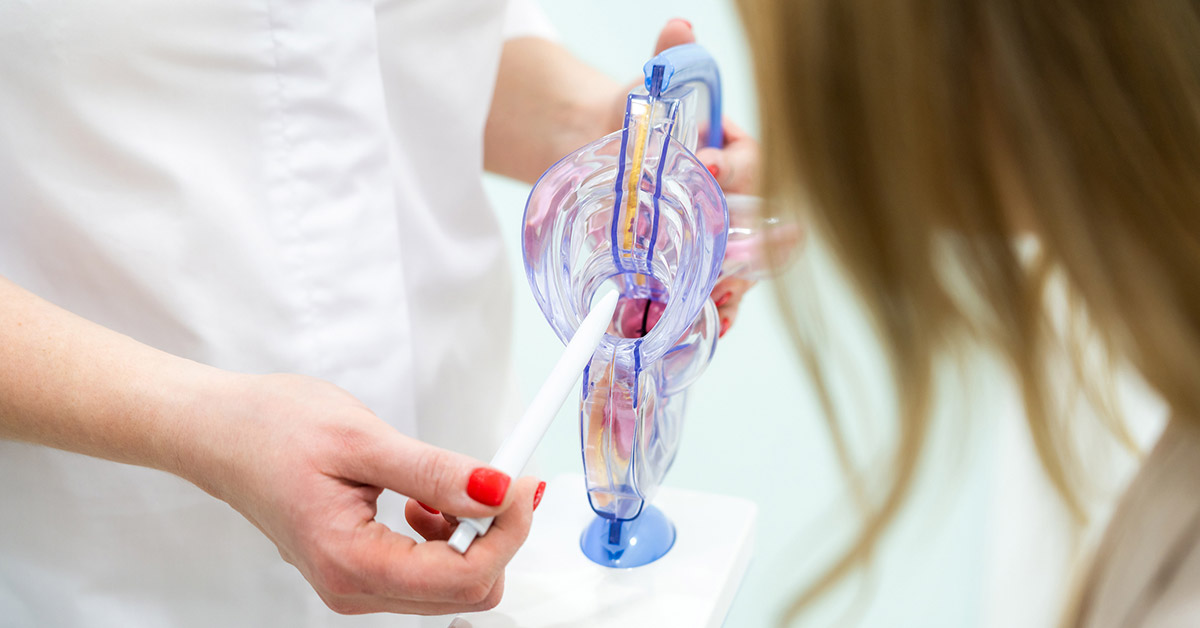
Performing labiaplasty on a minor requires careful ethical consideration.
Informed Consent
- Understanding and Agreement: The minor will need to fully comprehend the procedure, risks, and long-term effects. Parental consent will also be required.
Psychological Evaluation
- Maturity Assessment: Emotional and psychological readiness for surgery will be scrutinized.
- Screening for Psychiatric Illnesses: Mental health problems such as body dysmorphic disorder will be evaluated.
Medical Necessity
- Medical Indications: Legitimate medical reasons such as significant discomfort or functional loss are given more priority.
- Non-Surgical Options: Alternative solutions are usually exhausted before considering surgery.
Social Influences
- Media and Societal Pressures: Unrealistic beauty standards influenced by the media are addressed.
Ethical Guidelines and Regulations
- Professional Standards: Guidelines from medical bodies like ACOG, SOGC, and RCOG are usually followed.
These considerations ensure that the decision to undergo labiaplasty prioritizes the minor’s health, well-being, and future quality of life.
What To Expect Before And After A Labiaplasty As a Minor

Before The Procedure
- Consultation and Evaluation
- Initial Consultation: you will have to meet with a qualified surgeon to discuss your concerns, medical history, and reasons for considering labiaplasty.
- Psychological Assessment: You may be required to undergo a psychological evaluation to ensure emotional readiness. Screening for underlying mental health issues will also be done.
- Physical Examination: The surgeon will examine the genital area to determine if labiaplasty is necessary and appropriate.
- Informed Consent: The minor and her parents or guardians must understand and agree to the procedure, including its risks and benefits.
- Preparation
- Preoperative Instructions: The surgeon will give specific instructions, which may include avoiding certain medications, fasting before surgery, and shaving the genital area.
- Arrange For Support: Support during the recovery period, including transportation home from the procedure and assistance during the initial recovery phase, is emphasized.
After the Procedure
- Immediate Post-Operative Care
- Recovery Room: Some time is usually spent in the recovery room, where medical staff will monitor the immediate post-operative condition closely.
- Pain Management: You will be given pain medication to manage discomfort. Expect some swelling, bruising, and mild pain.
- Rest: Plan to rest and avoid strenuous activities for the first few days.
- Follow-Up Care
- Follow-Up Appointments: You will have to attend scheduled follow-up visits with your surgeon to monitor healing and address any concerns.
- Hygiene: You will have to keep the area clean and follow your surgeon’s instructions for wound care. Avoid using harsh soaps and wear loose, comfortable clothing to reduce irritation.
- Activity Restrictions: As advised by your surgeon, avoid heavy lifting, strenuous exercise, and sexual activity for several weeks.
- Monitor for Complications: Watch for signs of infection or other complications, such as increased pain, unusual discharge, or fever, and report them to your surgeon immediately.
By understanding what to expect before and after labiaplasty, minors and their families can make informed decisions and ensure a safe and smooth recovery process.
Is Labiaplasty Safe?
When performed by a skilled and experienced surgeon in an accredited medical facility, labiaplasty is generally a safe procedure. However, as with any surgery, it carries inherent risks and potential for complications.
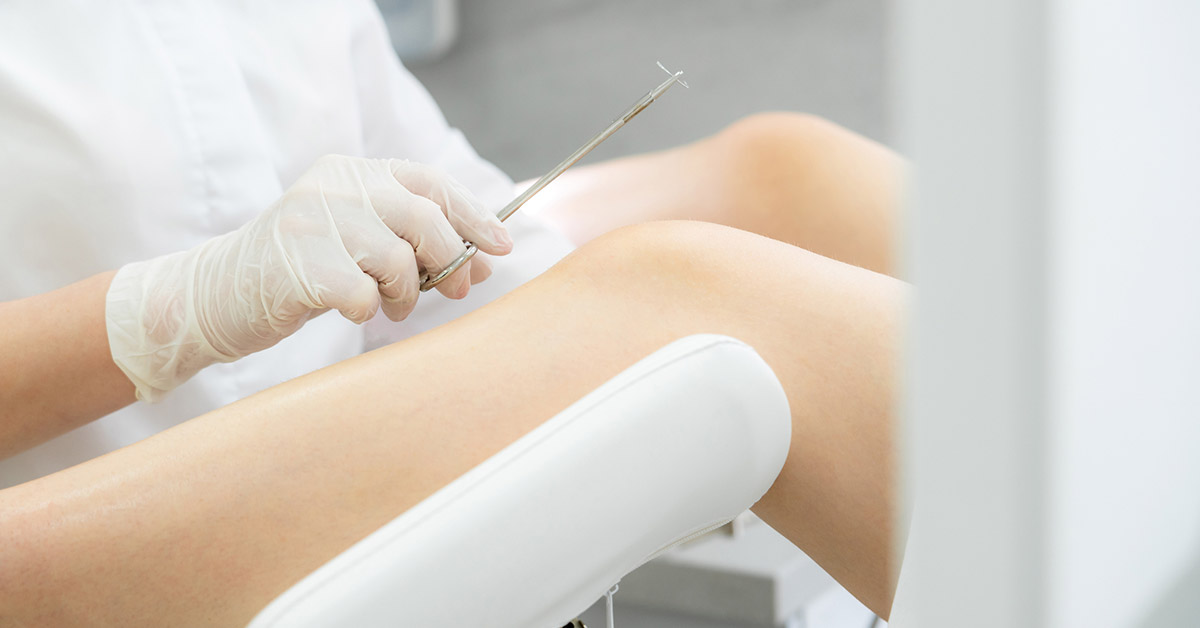
Risks/Complications Associated With Labiaplasty
The following are possible adverse effects and complications that may follow a labiaplasty procedure:
- Infection
- Occurrence of overt bleeding or formation of hematoma, leading to discomfort, pain, and swelling.
- Possibility of scarring, though this is less likely with the wedge and Z-plasty techniques.
- Temporary or permanent changes in sensation around the labia minora.
- Risk of asymmetry in the appearance of the labia.
- Poor wound healing, breakdown and separation.
- Unsatisfactory cosmetic results that may not align with the patient’s expectations, potentially necessitating a revision labiaplasty.
Consult Professionals for Safe and Effective Labiaplasty

Labiaplasty is a procedure that should be carefully considered, especially for minors. Age, emotional readiness, and medical necessity are crucial factors in determining candidacy. Consulting with experienced healthcare professionals and understanding the potential risks and benefits ensures informed decision-making and optimal outcomes.
Labiaplasty NYC offers world-class, minimally invasive gynecological procedures. Contact us today to consult with our experienced specialists.
References
- Measurements of a ‘normal vulva’ in women aged 15–84: a cross-sectional prospective single-centre study: A Kreklau, I Vâz, F Oehme, F Strub, R Brechbühl, C Christmann, A Günthert
- https://www.americanboardcosmeticsurgery.org/popular-posts/teen-labiaplasty/

